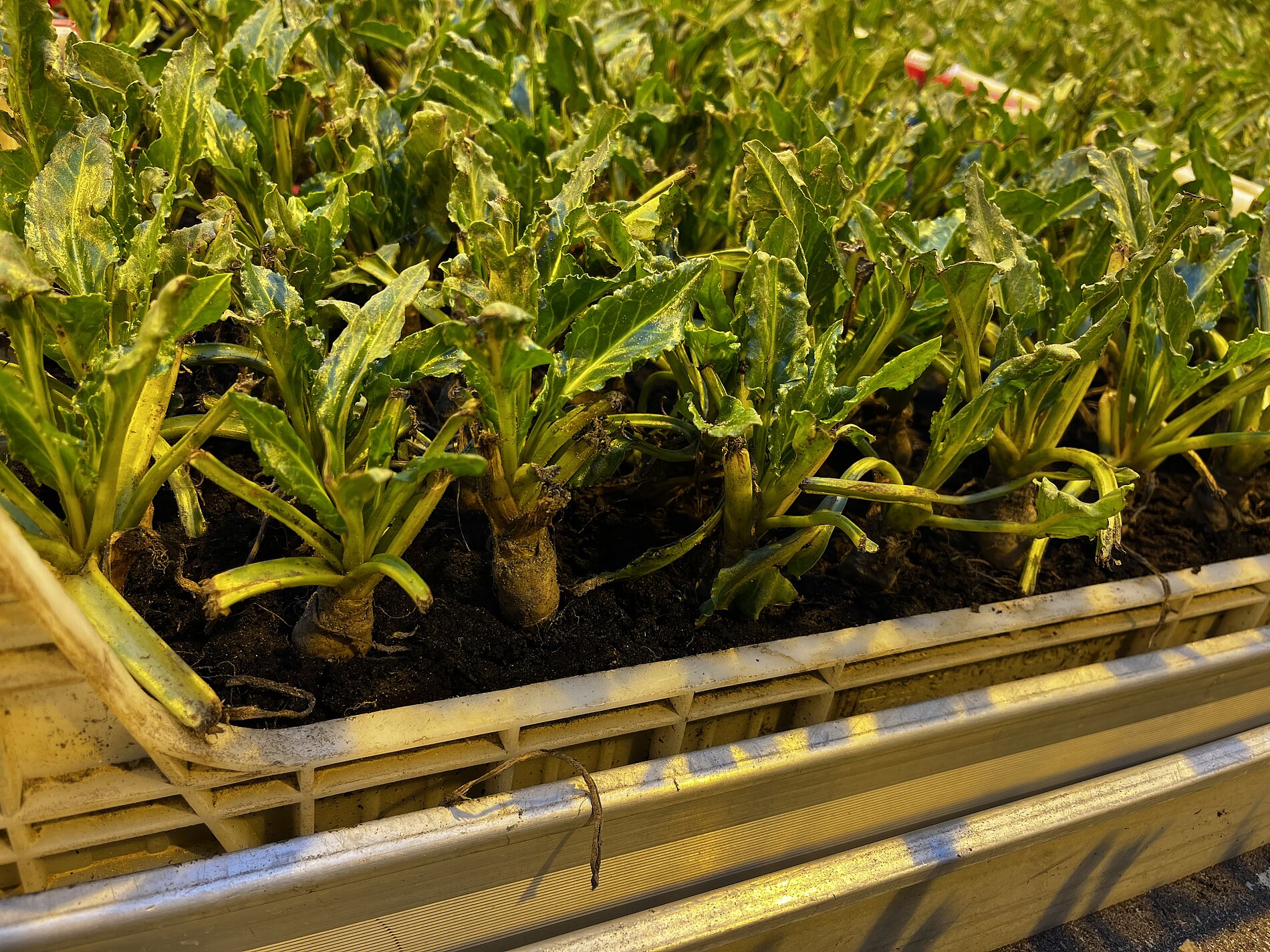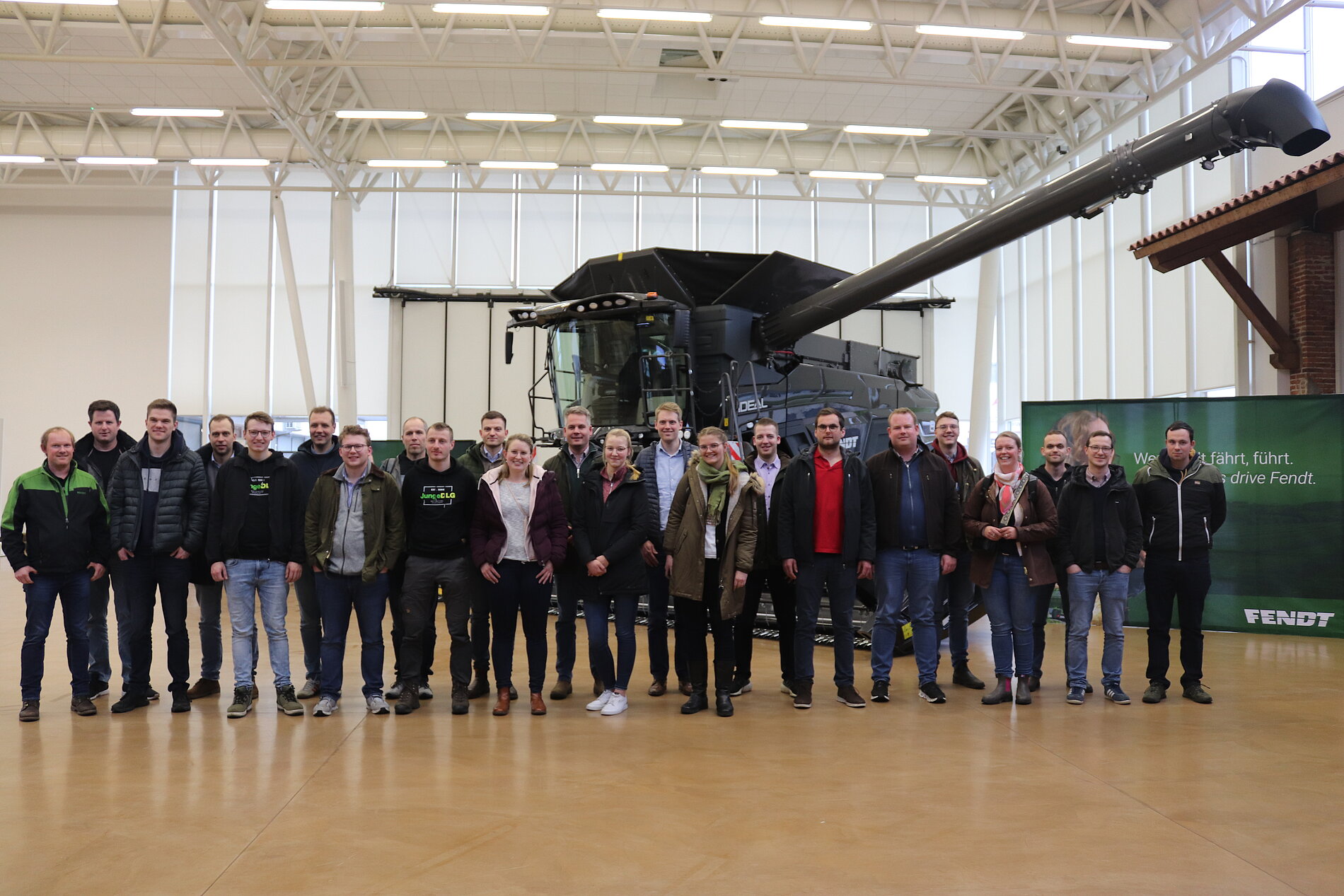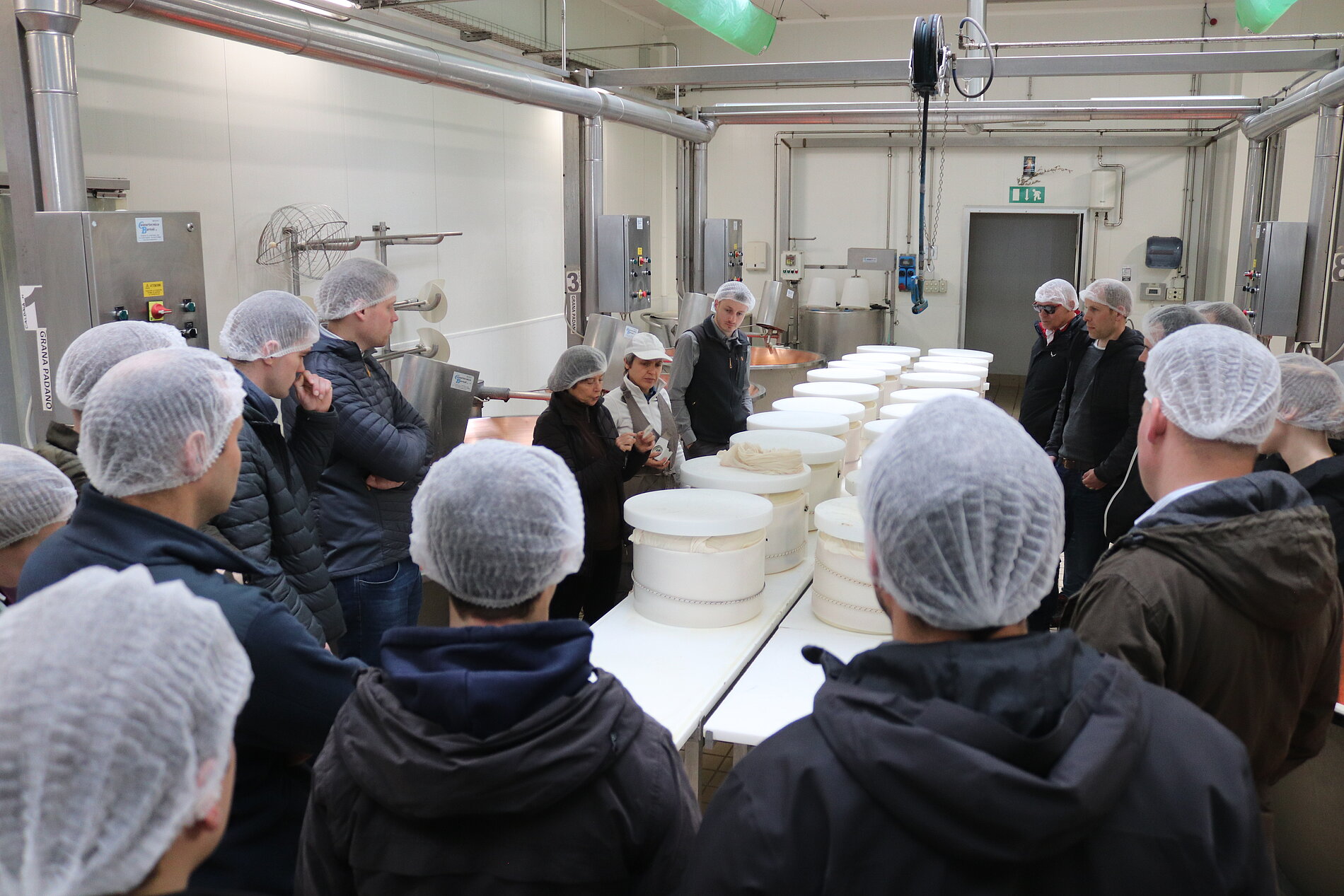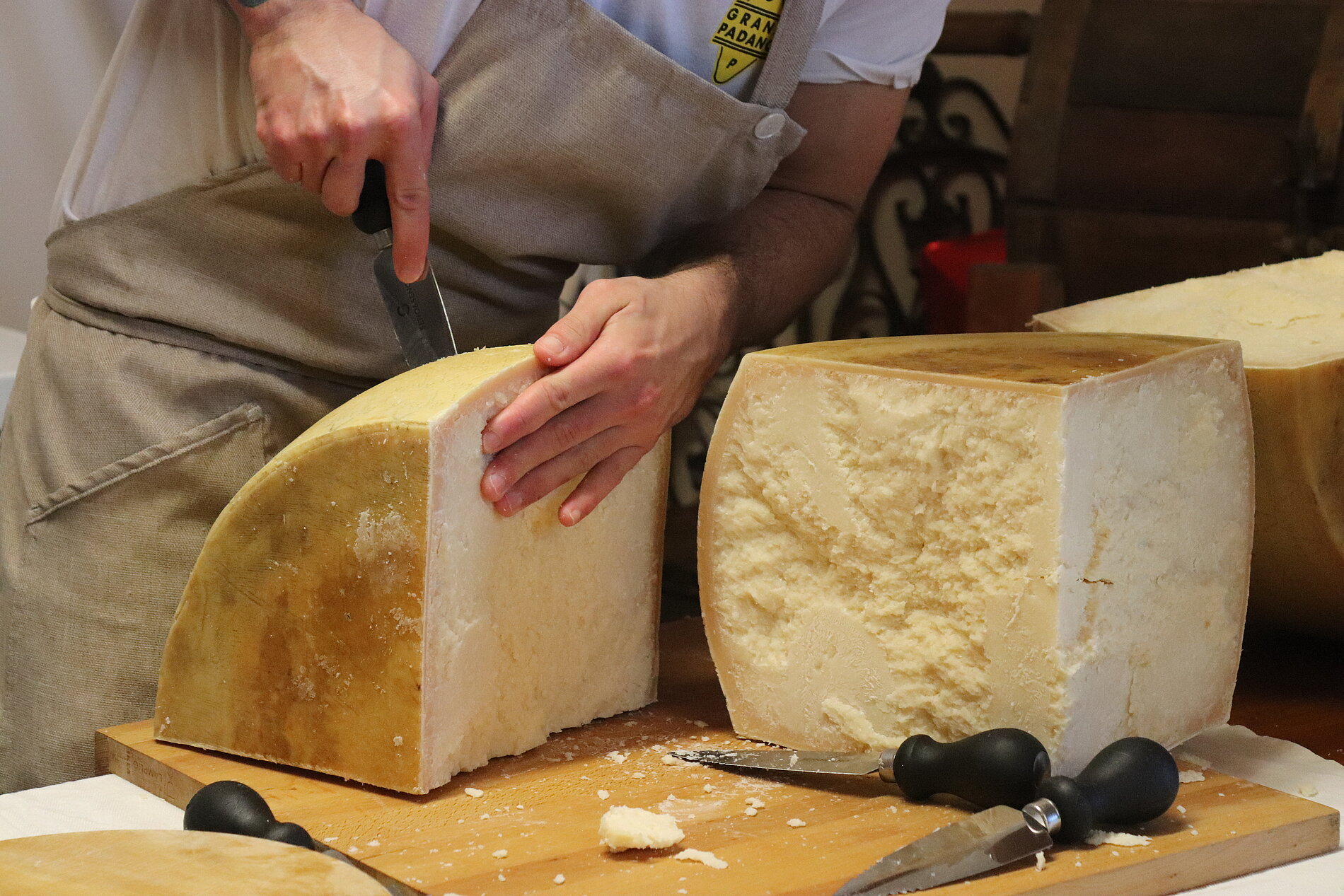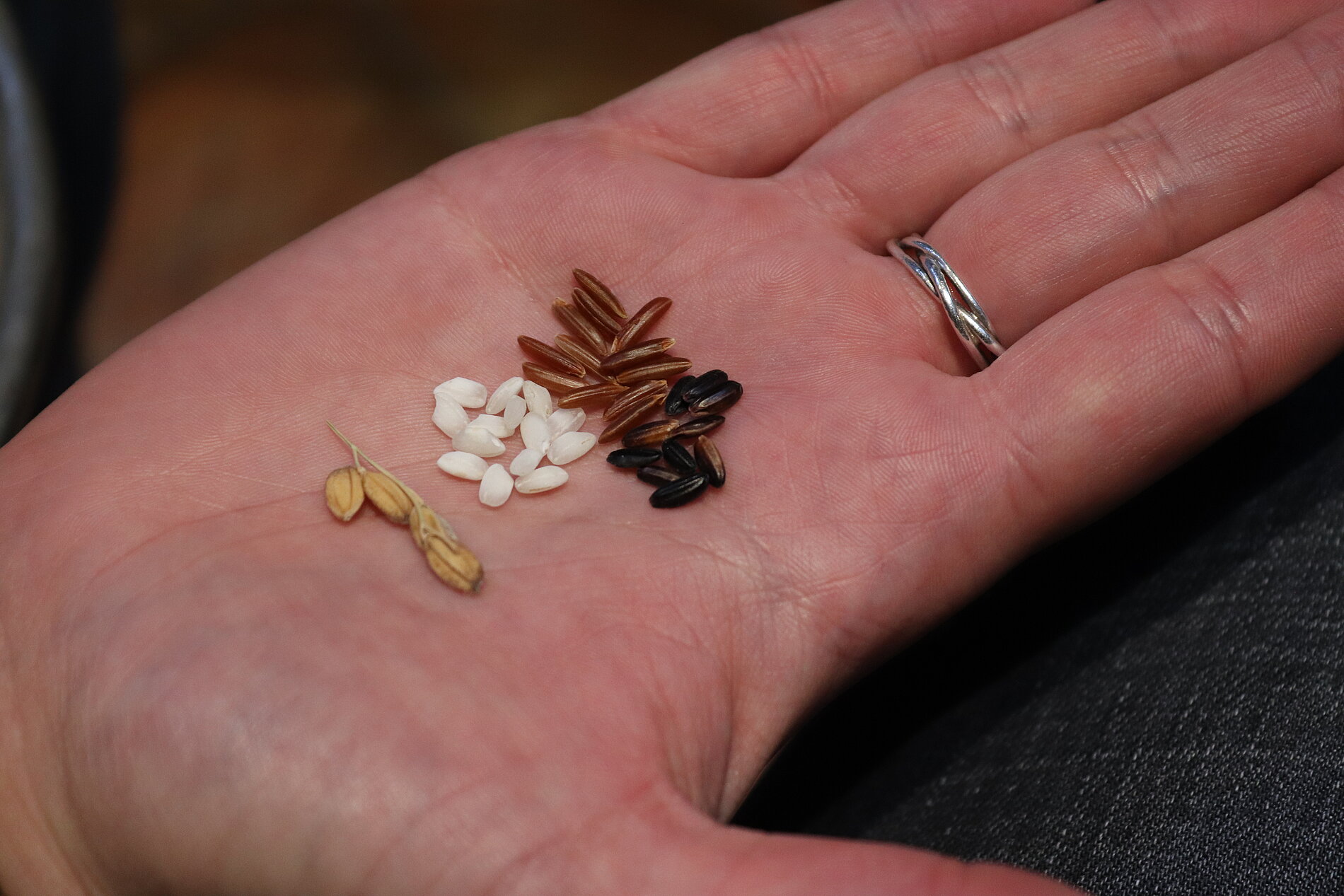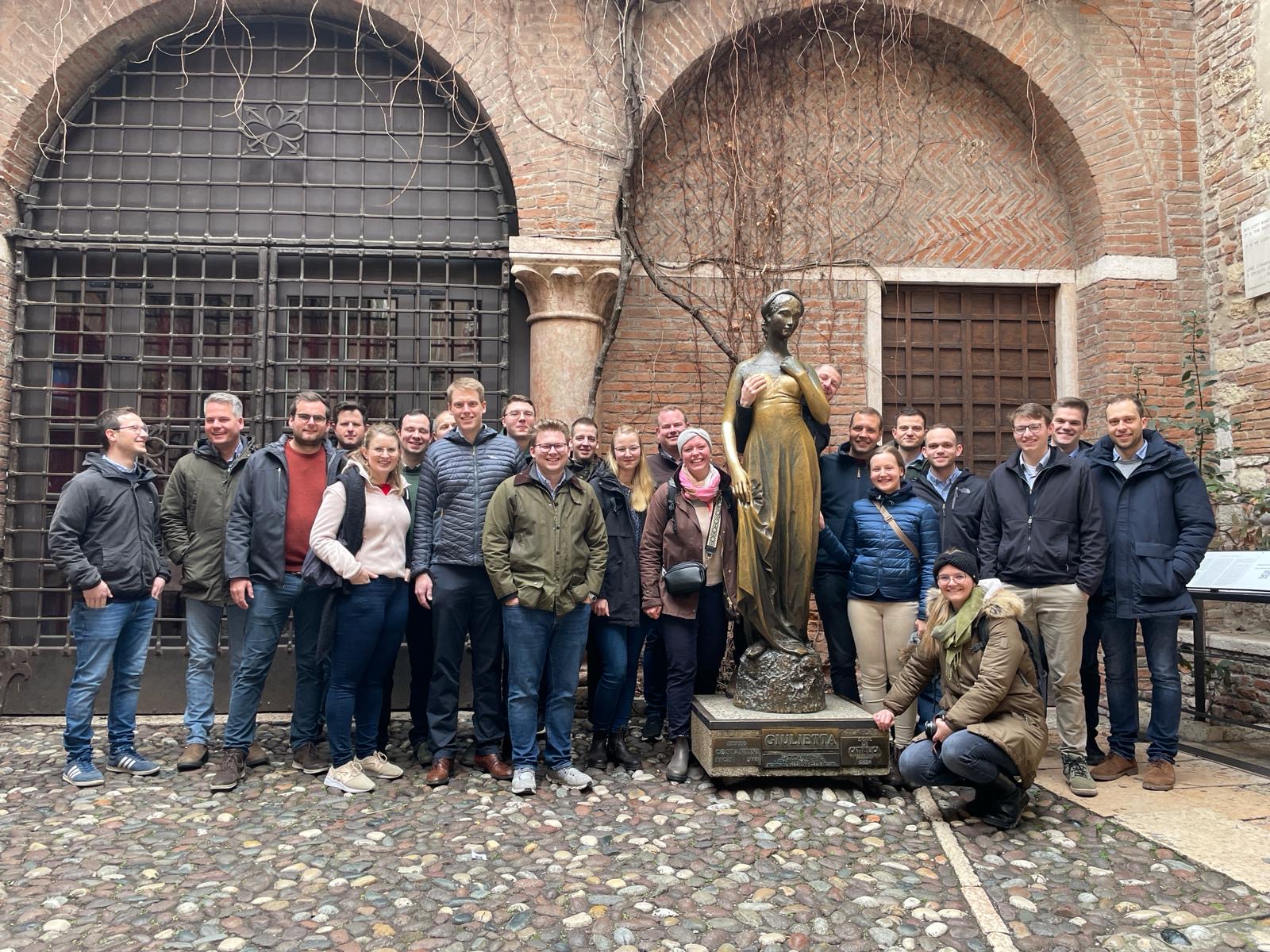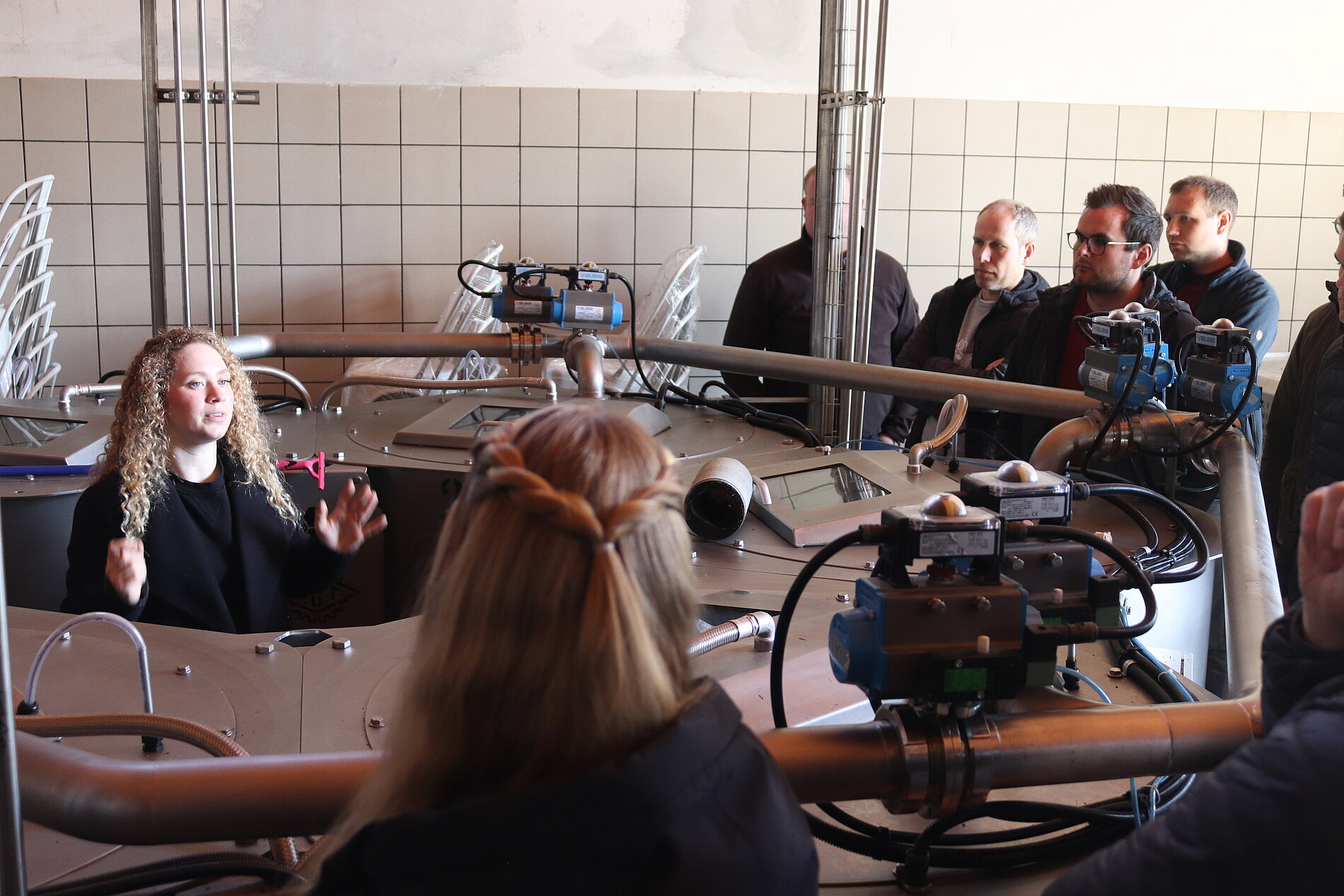Young DLG excursion to Italy
As part of the Young DLG working group, we were invited on an excursion to Northern Italy from 23 to 25 February. We went with the expectation of expanding and consolidating our own network with the other members of the group, as well as gaining interesting insights into agricultural production in the Veneto region and the marketing strategies of entrepreneurs. Participation enabled us both to receive the prize money of the International DLG Award.
For most of the participants, the journey began on the evening of 22 February at Munich station. We met there for the night train journey to Verona. This was the first unforgettable experience. This type of travel allowed for lively exchanges and discussions in the evenings, during which all participants were able to get to know each other better, although sleep was only partially restful.
In the morning of 23 February, we started the first day of our excursion together and travelled by coach to KWS Italia in Monselice. Lectures and a tour of the plant gave us an insight into sugar beet breeding, which is the focus of KWS' second largest breeding station. The biggest challenges facing sugar beet cultivation in Italy are drought and the leaf disease cercospora, which affects 95% of the crop. When both factors occur together, experts speak of "cercostress" for the plants, which leads to massive yield losses. KWS is focusing its breeding efforts on these two factors at the Monselice site. With the successful establishment of the CR+ variety line, a significant contribution has already been made to making plants more tolerant and less susceptible to cercospora, while at the same time maintaining yield performance at a high level. During the factory tour, we were given an explanation of how sugar beet is bred in field trials. We were able to see how sugar beet cuttings are sorted, grown in the greenhouse after the vernalisation stimulus and prepared for transplanting and flowering in the field.
Despite our knowledge of breeding principles, we realised how much time and effort it takes to develop a new variety to market maturity. Vroni has been able to establish a good connection with sugar beet cultivation on her own farm, where sugar beet from the KWS CONVISO® SMART line was grown for the first time in 2023. Thanks to the work in Monselice, this variety line is also opening up completely new possibilities for practical agriculture.
We then travelled to Breganze to visit the AGCO Group's combine harvester plant, which employs around 1,000 people and produces around five combines a day. The plant was fully acquired by the AGCO Group in 2011 and has been continuously developed and modernised ever since. The combine development centre is located at the Breganze site and focuses on drive systems, hydraulics, threshing units and cleaning. During the discussion, it became clear that process automation is one of the main areas of development. One of the challenges is to develop sensors that can recognise the complexity of the threshing situation in good time and control the processes in the machine accordingly. At present, however, it is not possible to replace the human driver and controller. With the shortage of skilled labour and the challenges in the agricultural labour market, this focus has become even more important to us. The automation of simple processes is already increasing driving comfort and improving working conditions on the machines.
Saturday 24 February began with a coach trip to the Caseificio San Girolamo cheese dairy. This is a typical family business with 15 employees, producing mainly Grana Padano, but also other types of cheese such as mozzarella and ricotta. The farm receives 10,000 litres of milk a day from four surrounding dairies, so cheese is produced 365 days a year. When it comes to the fat content of the milk, "the lower the better", as the milk is processed with a reduced fat content of 2.5 per cent to make Grana Padano. Each vat of 1,000 litres of milk produces two wheels of 45 kilograms of Grana Padano. After soaking in brine for 17 days, the cheese is stored on high wooden shelves for nine months. All the important information about Grana Padano, such as the number of the dairy, the month it was made and, if it passes the fire test, the seal of approval, can be found on the rind. The differences between Grana Padano and Parmigiano Reggiano were most frequently mentioned. Grana Padano is slightly whiter and less intense because it can be fed on silage maize and the milk is delivered only once a day, not twice as with Parmesan. However, the two cheeses are also essentially distinguished by the region in which they are produced. Italy uses a labelling system known as D.O.P., which stands for "protected origin". Only products that come from a defined area and meet certain production parameters are awarded this label. This guarantees consumers high quality food that is unique to the region and protects the producer and their investment in production. After the production tour, we were able to sample a wheel of Grana Padano in the bustling farm shop. In addition to the farm shop, Caseificio San Girolamo sells its cheese mainly in northern Italy, at trade fairs and in small quantities abroad.
The next stop was the Tabarini family's dairy farm, Corte Vittoria. The farm, which has 160 dairy cows, grows maize and hay for feed on 33 irrigated hectares and cultivates a further 2 hectares of vines for a cooperative. In 2014, the family started processing their milk into cheese for economic reasons. The farm is certified according to the "Agriturismo" concept, which is subsidised by the state and was introduced in 1985 to reduce rural depopulation and preserve rural traditions. The aim is to provide the farmers with an additional income by selling their own produce. To date, Corte Vittoria has developed into its own cheese dairy and ice-cream factory, with an adjacent farm shop and restaurant, which are thriving thanks in part to the farm's convenient location on many cycle routes. The farm is also certified as an educational centre where children and young people are taught about food production. The reorganisation means that all three sons in the family can work on the farm. Four days a week, around 10 per cent of the milk is processed into cheese, yoghurt, drinking milk and ice cream. At weekends, the farm organises restaurants and events of all kinds, as the products are only marketed locally. In the summer, the Tabarinis produce around 100 kilos of ice cream a day, with organza, yoghurt and strawberry being the most popular flavours. Our tour of the barn, farm and cheese production ended around midday with a generous tasting in the Tabarinis' restaurant. Mr Tabarini said that the biggest challenge facing agriculture was structural change, which had also confronted his farm with the question of "grow or die", as well as the fact that young people still had few prospects in the countryside and that farm succession was therefore rarely resolved. Thanks to subsidies for young farmers and established direct marketing, he believes he has laid an important foundation for his business.
In the afternoon, our coach took us to Risotteria Melotti. This is where the Melotti family grow 350 hectares of risotto rice, a staple in Italian cuisine. As the rice can only be grown for a maximum of five years in a row, there is a lot of emphasis on land rotation. From growing the six varieties to processing and selling, the farm is self-sufficient. Cultivation begins in spring with levelling, disc harrowing, rolling and canalisation. Once the rice has been sown using a fertiliser spreader or seed drill, the fields are flooded to create the typical "Italian rice fields". From a phytosanitary point of view, fungal diseases can become a problem. After the water is drained two weeks before harvesting, rice harvesting begins in September with an average yield of 6-6.5 tonnes of rice per hectare. Before storage, the rice grains must be dried in a time-consuming process from around 25 per cent to 12-14 per cent moisture. After at least two months of storage, the rice is ready for husking and packaging. In addition to marketing through the farm shop, online shop and events, we found the distribution through the Melotti family's five restaurants in Verona, New York, Rome, Florence and Milan particularly interesting.
The last day of the trip started with a guided tour of Verona, which gave us an insight into the city's rich history and culture. Our guide, Aurora, told us that Verona is famous for its impressive ancient Arena, which is still used for concerts and festivals in the summer. Many tourists also visit Verona to follow in the footsteps of Romeo and Juliet. As well as historical sites, the city offers a lively atmosphere and culinary delights. The motto of many Italians is: espresso till 11am - Aperol from 11am.
After the city tour, we travelled to Lake Garda in the late morning. First we visited Nicoletta Manestrini's olive oil company, Frantoio Manestrini. The company processes olives from 3,000 olive trees into oil. The olive trees, which are between 40 and 60 years old, produce an average of 20 kilos of olives, which equates to about three bottles of oil. As well as the techniques of olive growing, we were also given a detailed explanation of how to obtain high quality cold pressed oil. We learnt that the right temperature control during the pressing process is crucial to the quality of the oil. The company also focuses on sustainability by using waste materials such as skins and stones to generate energy. Increasing challenges in olive growing are bacterial diseases and hail, which caused a lot of damage last year. At the end of the olive grove and production tour, we were able to taste the high quality of the different olive oils.
The last stop on this year's working group excursion was the Casacina Maddalena winery on the shores of Lake Garda in Sirmione. The winery is celebrating its 100th anniversary this year and impressed us with its modern wine cellar. The family produces white, rosé and red wines on four hectares of land. White Lugana accounts for almost three quarters of the annual production of 35,000 bottles. We learnt that the clay soils of this region play a decisive role in the flavour of the wines, especially the Lugana. Although the winery is not certified organic, they use less pesticide and cover the soil with legumes for sustainability. The Italian excursion was rounded off with a culinary highlight: dinner at the winery with wine tasting and homemade Italian delicacies.
The agricultural trip to Italy was an enriching experience that not only gave us an insight into the country's agricultural practices, but also provided us with cultural knowledge. We were impressed by how proud the Italians are of their products and the ways they have found to market them. At the same time, the pressure on producers is increasing in a society that is placing more value on enjoyment and food. It was interesting for us to be able to emphasise the rightful appreciation of the products already as producers, and this is an incentive to constantly question and promote this in German agriculture and on our own farms. Between all the programme items there was always time to get to know the other participants better and to strengthen the community of the Young DLG Working Group. We are grateful for the hospitality and the valuable impressions we received during the trip!
Co-authored by Charlotte Aue (winner of the 2022 Junior Award) and Vroni Koch (née Hentschel, winner of the 2017 Advanced Training Award).

